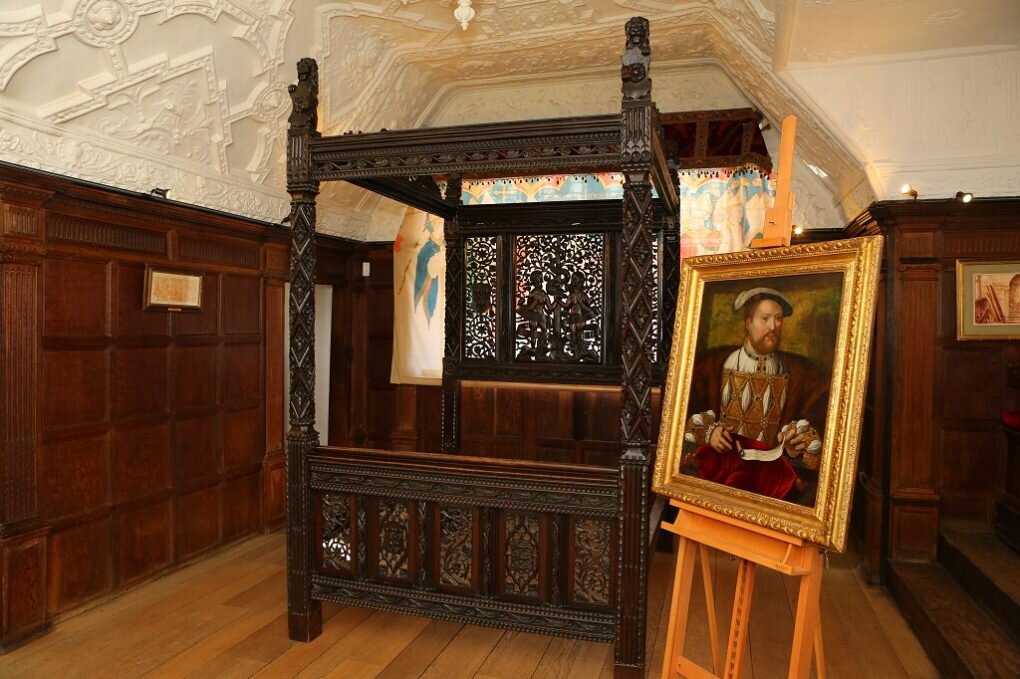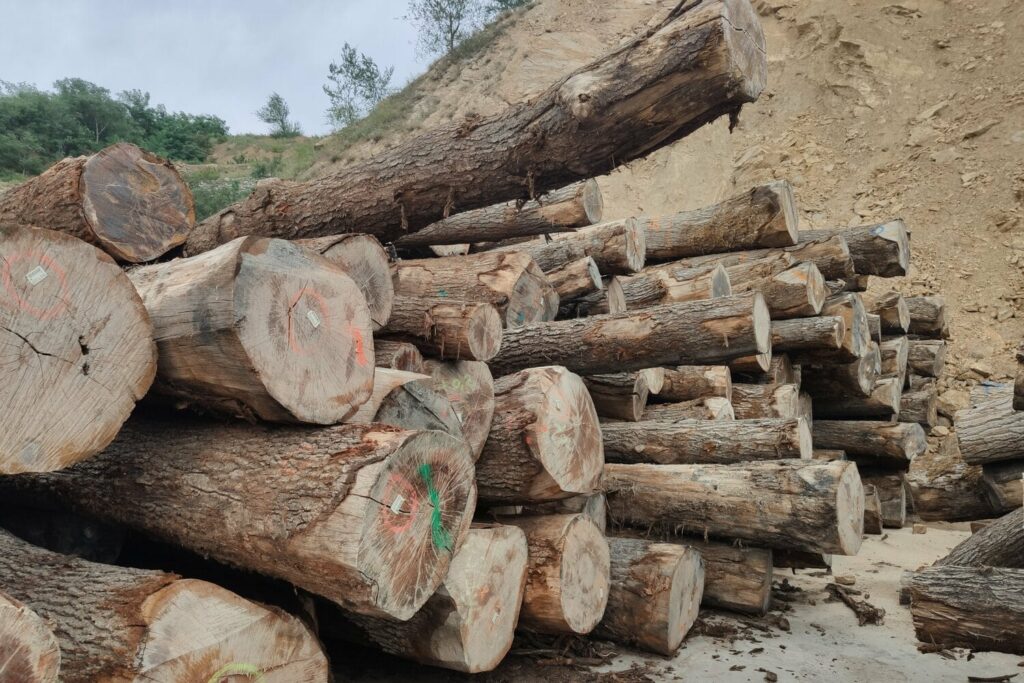By Ken Hickson for Focus on Forests
“Something old, something new, something borrowed, something blue”. While that’s usually applied to the bride’s attire on wedding days, but as these matrimonial events are very restricted around the world these days, why not apply it to a precious wood instead? Oak. Lockdowns or not, it is still being utilised for many purposes, whether old, new, borrowed or blue.
Prompted as I was to consider oak by Jancis Robinson’s Financial Times article earlier this year, when she looked into its current status as the ageing wood of choice for wine makers and connoisseurs, in France at least.
“Oak has been by far the material of choice for wine barrels. Being watertight, supple but hard, oak has a natural affinity for wine. As the wine ages, it allows in just enough oxygen to encourage stability and clarity and its flavours seem to marry particularly well with many wines. American oak is used for ageing many spirits and sherry but for wine producers French oak has been the ne plus ultra (the ultimate), not least because for centuries the French government has been managing extensive forests carefully dedicated to the needs of winemakers.”
Jancis Robinson, Financial Times Wine Correspondent (February 2021)

Knowing that there are plenty of uses for oak beyond the wine barrel, I couldn’t resist delving further into this age-old precious, taste-preserving use of this ancient wood for a very profitable purpose.
Here’s what England’s vintage Wine Society (founded in 1874) has to say about it, reinforcing the unique role of oak:
“Questions about oak in wine have become pretty much routine: ‘New or old? French or American? Size of barrel and how long?’ However, in practice our scientific understanding of how oak influences wine rather lags behind our knowledge of the grapevine itself.
In part, I suspect this is due to the long timescales involved in growing oak trees, which are often well over 150 years old by the time they are felled to make into barrels.”
Then, after some sleuthing, we unearthed something much older in oak, with Royal credentials, what’s more.
All about verifying the authenticity of an ancient bed – made of oak, of course – which could, conceivably, have been where the King Henry VIII started out on life’s journey.
History records that his father Henry VII (28 January 1457 – 21 April 1509) was the King of England and Lord of Ireland from his seizure of the crown on 22 August 1485 until his death. He was the first monarch of the House of Tudor.
The Straits Times produced this story in 2015:
“A Singapore-based company specialising in testing wood DNA has helped prove that a bed once dumped in a carpark is actually a 500-year-old artefact which could be worth £20 million (S$40 million).
The four-poster oak bed, which one expert has called England’s most important piece of furniture, could even have been where one of its kings, Henry VIII, was conceived.”
Double Helix Tracking Technologies continues the story: Discovered at auction in 2010, research on its provenance, structure and symbolism narrowed it down as the bed made for the marriage of Henry VII and Elizabeth of York on 18 January 1486.
Checking further with the source, Double Helix tells us that using a DNA marker that is just 8 base pairs long – a very small but vital genetic measurement – North American and Eurasian white oak can be differentiated.
“Short DNA reference markers that are found even in fragmented DNA were used to identify the species of oak in samples,” explains Professor Andrew Lowe, at the University of Adelaide and Chief Scientific Officer of DoubleHelix, referencing the unique DNA extraction protocol developed by the enterprising company.
Prof Lowe would know this well, as one of the world’s leading forest geneticists. Back in 2004, he was part of a team that successfully extracted DNA from the oak timbers of King Henry VIII’s Flagship, the Mary Rose, which sank in 1545 and was salvaged in 1982.

As it turns out, all samples from the Royal oak bed had this unique marker present, showing that the oak used was not from North America, as previously suspected. Further testing strongly suggested that the samples were in fact continental European oak, instead of from the British Isles.
It was apparently quite typical for English medieval elites to import the finest, slow-grown oak for their Royal beds.
As discovered from Prof Lowe and his team of scientific fingerprinting sleuths, the DNA of the mighty oak tells many stories – about where it comes from and how it is used, whether for beds, boats, barrels or even boards. Floorboards, that is.
Oak featured into another DoubleHelix ongoing investigation, this time for another UK organisation in the flooring business, which wanted to make sure the oak it was using was the real thing.
Six years ago (in 2015), Brooks Bros (UK) Ltd called on DoubleHelix as it wanted to provide assurance to its customers that the oak harvested from certified forests in Europe and shipped to China to be turned into flooring products, was not being contaminated in any way.

In the process, they wanted to clearly communicate that their market-leading actions met the strict British Responsible Purchasing Policy standards.
A team was formed, consisting of bilingual staff based in Beijing, China, supported by team members in Singapore, to ensure effective communication with both the Chinese supplier and to the head office of Brooks Bros in Maldon, England.
What DoubleHelix set in train was a desk-based and on-site risk assessment in China to map out the supply chain and identify any risks. To further mitigate against higher risk sources entering the supply chain, the tracking experts recommended a customised verification process of document checks for every batch of oak logs delivered to the factory.
Then the science at the heart of DoubleHelix’s work came into play. An isotope testing process was applied on a sample basis to oak components, providing independent, scientific evidence and assurance of its Western European origin.
Every step of risk assessment, mitigation and supplier engagement was carefully documented, so that verifiable evidence was always available, integrated into the Brooks Bros’ existing Due Diligence System.
Admittedly, this went beyond DNA fingerprinting, but it goes to show that solving crimes involving wood – and preventing them – is all in a days’ work for DoubleHelix.
Oak is obviously not the only wood the Singapore-based company takes care to track and trace. It was directly involved in the classic US case of the BigLeaf Maple, catching those involved in forest crime by using on-the-ground and lab testing. It turned out to the first use in the world of DNA fingerprinting to catch a thief in the forest.
More recently the University of Adelaide and DoubleHelix have been called on to prevent the illegal harvesting and export of the precious bark of the African cherry, which is used in prostate cancer treatment in Europe.
It also works with other organisations internationally, like Sourcemap, to help confirm market commitment to traceability and transparency. Then there’s the supply of timber from Europe for projects in Asia, like the Patina resort in Maldives and the Changi Chapel Museum rebuilding in Singapore.
There’s another one coming up involving Venturer Timberwork, PEFC and DoubleHelix around a collection of Mass Engineered Timber (MET) pavilions for the National Parks Board in Jurong.
Leonardo A Bonanni, the Founder CEO at Sourcemap, had this to say recently:
It's time we applied the same standards across supply chains and implement full traceability for certified sustainable raw materials — and to put an end to the myth of mass balance.”
So, we are convinced that “traceability is worth its weight in gold”, whether it’s to verify the European oak that featured in the 500-year-old Royal bed – reputedly worth £20 million (S$40 million) – or to detect illegally logged timber from Asia, America or Africa. DoubleHelix has tracked and traced them all.
And next time you take a sip of French wine from an oak-aged barrel, you can rest assured that it’s possible to not only be assured of the origin of the vintage, but also the oak in the barrel, in your bed or on the floor!
Note: The historic Royal oak bed featured in this article is held in Coulson’s Langley Collection of historic beds and, along with other vintage furniture, often features in exhibitions at stately homes and castles in England.


